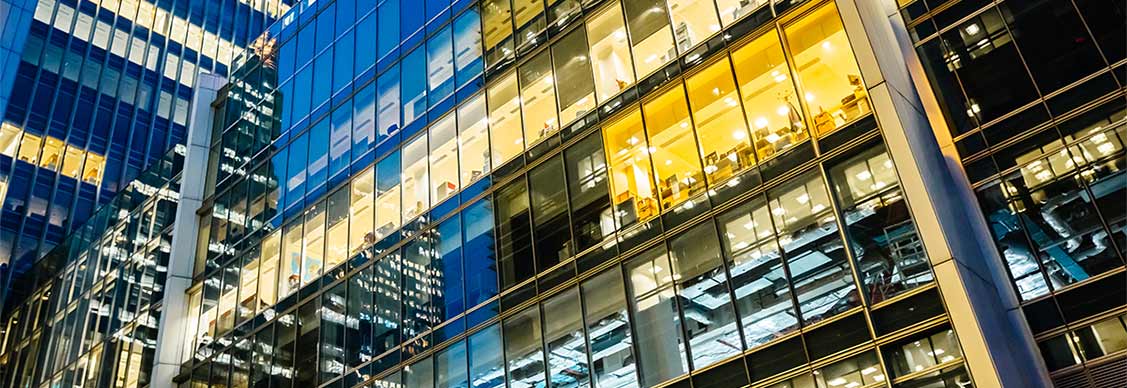How companies are dialing down energy costs
With balance sheets under scrutiny, companies are focusing on reducing energy consumption in buildings
Energy crisis, supply chain volatility, rising interest rates, soaring inflation: a litany of pressures is causing price increases in operational costs across real estate portfolios.
One place companies are focusing cost reduction strategies is energy, doubling down on efforts to reduce consumption and improve efficiency.
But it’s a tricky time to try and reduce costs while simultaneously keeping employees – who just recently got back to the office on a regular basis – happy and productive. Offices are busier now than at any stage since the COVID-19 pandemic.
“CRE leaders and companies are recognizing the increasing importance of the workplace in attracting talent,” says Hannah Dwyer, EMEA Head of Work Dynamics Research and Strategy. “Yet leaders now face the complex task of adapting to hybrid models and making office spaces more fit-for-purpose, at a time when budgets are under pressure.”
Getting the balance right
Many companies were already looking at making adjustments to a building’s temperature levels and schedules, but it has now become an imperative, says Shane Betts, Head of Corporate Business at Integral, JLL’s building services and engineering firm. Running the system at lower intensity and for fewer hours, is one easy way to stop wasting energy and cut costs.
“It’s about asking ‘is this fit for purpose?’ - all engineers should have an energy performance focus,” Betts says. “Not everything needs to be running at maximum capacity to maintain standards.”
For instance, one global financial services company seeking to identify cost saving opportunities, recently had their onsite teams conduct an energy audit that identified a raft of energy reduction measures across their portfolio. This included tweaks to their heating ventilation and cooling systems (HVAC), one of the most intensive consumers of energy in commercial offices.
These changes drastically reduced excessive consumption. In one large building alone, savings totalled $664,158 a year.
Other areas being targeted include lighting and keeping up with servicing. Betts says companies are accelerating efforts, removing surplus lamps, using LED bulbs, cleaning equipment regularly, and making sure sensors are working properly as straight forward steps that can make a big difference.
“Appliances kept on constant standby like 'zip' water boilers and vending machines should have timer controls installed so they operate only during occupied hours,” Betts says.
Cost saving is a team sport
In large buildings with multiple tenants, each company is often able to make their own decisions about heating or air conditioning. But having a building functioning as a singular unit stands to save everyone money.
“Owner occupiers have more autonomy than those in a multi-tenanted building, but in all cases, the key question property managers should be asking is ‘how can this building operate as a cohesive unit to drive efficiency for all?’” says Betts.
In California, NOME Capital Partners successfully cut energy use by 45% in a multi-tenanted building using AI and algorithms to run HVAC more efficiently.
Key was getting disparate parties on the same page. “There is no one-size-fits-all approach as each organization and building is different. You need to bring people together to make the right decisions,” Betts says.
Communication is key
Keeping everyone happy while cutting costs is no mean feat, but Betts believes with good change management and the right internal messaging, it can be done.
“If you’re changing how a building feels, you need to communicate that to the end users, so they don't just walk in one day, feel too hot or cold, and start trying to adjust the aircon levels,” he explains.
Giving people choice can also be a big draw.
“Many companies have now moved to unallocated desks, so highlighting zones where the temperature is naturally hotter or cooler, also helps people choose their desk based on comfort,” says Betts.
Driven by data
Combining existing and new data sources with built environment knowledge, will help organisations tackle cost and energy challenges.
“Understanding the criticality, condition and operating conditions of your assets is key to making the right data led decisions - such as what assets to maintain and when to invest capital in new, more efficient systems. Moving from a generic maintenance strategy to a targeted, strategic asset management plan, is the foundation of operating compliant, efficient, and comfortable spaces,” says Betts.
“Establishing good metrics and embedding technologies to measure building data points are key to dynamic decision making in the new world of work,” agrees Dwyer. “We’ve seen that 56% of companies plan to adopt technology for predictive facility management in the near future to improve performance and the overall life-cycle of their assets.”
Betts says that this technology empowers the people with knowledge and skills to implement change. “Think in terms of performance engineers and managers – not just maintenance engineers. You want teams to add value by acting on the data to make things better, not just maintain the status quo.”
With firms looking to achieve greater resilience in the long term, it’s not just rising energy costs and the threat of utility rationing that’s creating risk. Thanks to the climate emergency, unprecedented heatwaves and wildfires have recently seen places like California suffering blackouts.
Companies with global portfolios can learn a lot from colleagues in places used to power shortages and frequent blackouts, such as West Asia and South America.
“Sharing best practice across borders, whether on cost savings or risk management, is a useful exercise for everyone,” Dwyer says.
